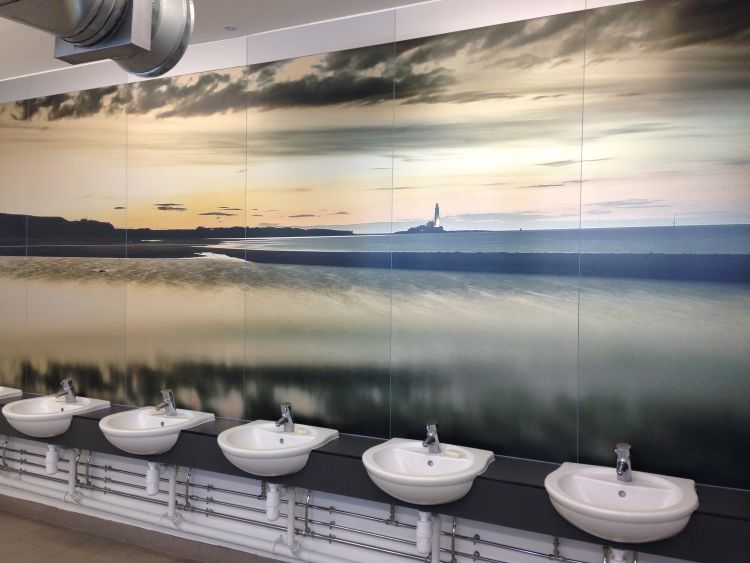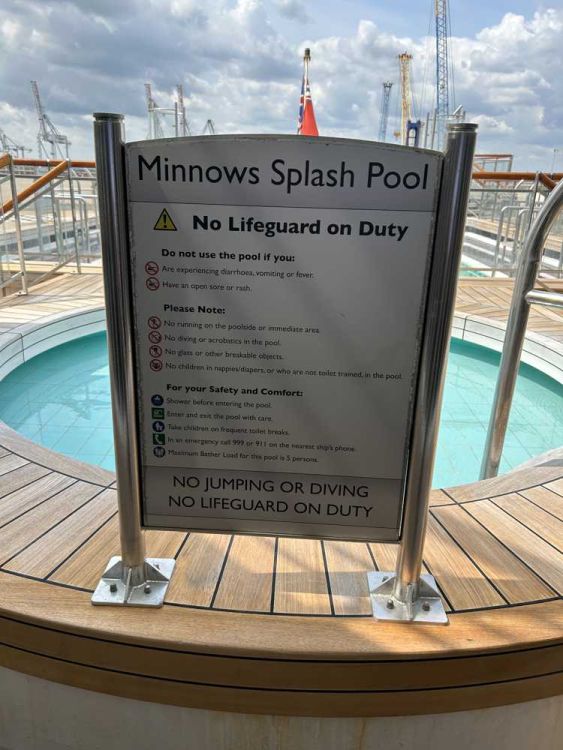Anoprinting for marine signage




Harsh marine conditions
Multitechnic was founded at the beginning of the 1970s to create high quality artworks and decorative items in a range of metals. The same high-definition process that had recently been developed for manufacturing silicon chips was found to be effective for etching into metals. To this day we use the same technology, although we have improved the process to produce better results when etching metals such as brass and stainless steel.
Marine Signage is one of the most challenging environments for signage. We asked Colin Edge, Managing Director at Multitechnic, the demands that Marine Signage faces. Colin tells us, “When you go for a stroll on the deck of a cruise ship, you expect the look of a good quality hotel. You also expect that nice hotel to float across the seas, taking you to the beautiful fjords of Norway, or around the Caribbean islands in tropical sunshine. It is harder to imagine a more challenging environment for signage, but signage is necessary around decks, stairs, pool-sides, for safety and for information, and it has to look nice.”
With huge exposure to the elements, Colin tells us about how a Marine environment affects traditional forms of signage. “As if a normal marine environment wasn’t enough of a challenge, the decks of cruise ships tend to be washed down with salt water, sometimes twice a day, and in tropical sunshine, that leaves salty residues that dry to super-concentrated paint stripper in minutes, day after day, week after week. There is no hiding from the sun on a ship that sails in all directions, and over most of the planet that sun will bleach colours much faster than it will in cloudy old Britain, a chilly 55° north of the equator.”
Colin continues “At this point, your experienced sign designer starts to think of 316 marine grade stainless steel; that must do the trick, it is after all stainless steel designed for the marine environment, clue’s in the name. Well that is true to a certain extent, but what about the graphics? Any print will come off almost immediately, and if you etch in the graphics, you need to fill the graphics with paint, and anybody with experience of painting metals of any type in a marine environment will know that the paint will be destroyed, and there is nothing you can do to stop it. You could use vinyl, but once that salt gets under the edges, even on a microscopic scale, a hideous peeling sign is inevitable
”The cruise operators want attractive signage that will last three years before requiring replacement, that is their expectation, and if you can offer that, they will be happy. Multitechnic have developed a signage standard, specifically for use in extreme marine environments, and much of the deck signage to this specification installed as far back as 2016 is still in service. For safety signage in colour that is also of a good visual quality, next to swimming pools on the decks of cruise ships, that is quite outstanding, and the same signage works for swimming pools on land too.
Technology at the heart of Anoprinted Aluminium
“The technology at the heart of the product is anoprinted aluminium.” Digital Anoprinting is a process used to print aluminium. The process starts by using a special, ‘open pore’ aluminium, which is permeable to the inks used to print it using a specialist printer. Once the aluminium has been printed, the print is then ‘sealed’ in a post treatment water tank, like a very hot bath. This process seals the open pores creating an extremely durable print which is resistant to extreme wear, chemicals and solvents, even with heavy use. Unlike a direct digital surface print, anoprinting has a completely smooth finish due to the print being under the surface, adding to its superior durability.
“This process creates full colour graphics inside the hard anodised surface of aluminium sheet. Like any other full colour process it will suffer from colour fade if exposed to intense sunlight, but full colour is not important. For safety and directional signage, black and some spot colours are all that is required, and Multitechnic have developed and tested some strong colours that will give an acceptable life in these conditions.
”Colin continues his explanation of the methods that Multitechnic have developed themselves, “we have also developed a unique process for preventing corrosion of the edges of the signs, by applying a conversion coating to passivate the aluminium.”
The right fixings
It is not only the sign, but the fixings that are important. Due to the salt-heavy environment, we asked Colin about the right fixing for a Marine environment. “Signs are almost always fixed onto sound painted surfaces using a specialist 3M adhesive, which Multitechnic supplies on the back of their signs. If any signs must be mechanically fixed, brass or bronze screws can be used, but steel or stainless steel screws must not be used for any aluminium based product. The same specification that is used for exterior signage on ships is useful in harbours, sea fronts, and other marine environments where adhesive fixing is probably not an option, Multitechnic keep a range of fixings in stock for these applications.
Anoprinted aluminium signs of this type are also used in the rail environment, including inside tunnels where all signage must comply with Low Smoke Zero Halogen (LSZH) requirements. This is something that may be specified for signage inside ships, submarines, and oil rigs, so anoprinted aluminium is also useful for these environments.
”The conditions between internal and external marine signage differ greatly, yet there still has to be considerations for robust signs. Colin elaborates, “Signage for the interiors of ships does not have to endure the extreme conditions experienced on deck, but it is still a marine environment. Brass is often requested, but really is not a good idea. Lacquers that look effective on brass do not last well, even in the seemingly harmless environments inside ships. Etched 316 grade stainless steel, especially with mixed use of satin and polished finishes can make beautiful signage that is also durable.”
Colin expands on this, “Anoprinted aluminium, away from the glare of the sun, opens up the possibilities of full colour signage that is also physically robust, for wayfinding on ships where surface prints would be too easily damaged. Remember that people moving about on moving ships, and their bags and clothing, come into contact with walls and the signage that is on those walls much more than on dry land, so signs need to be robust.”
Any signs for use in marine environments, decorative or functional, need some careful thought to ensure that what you supply to your customer will be up to the job. Multitechnic have a lot of expertise in this field, and for other challenging environments.”
